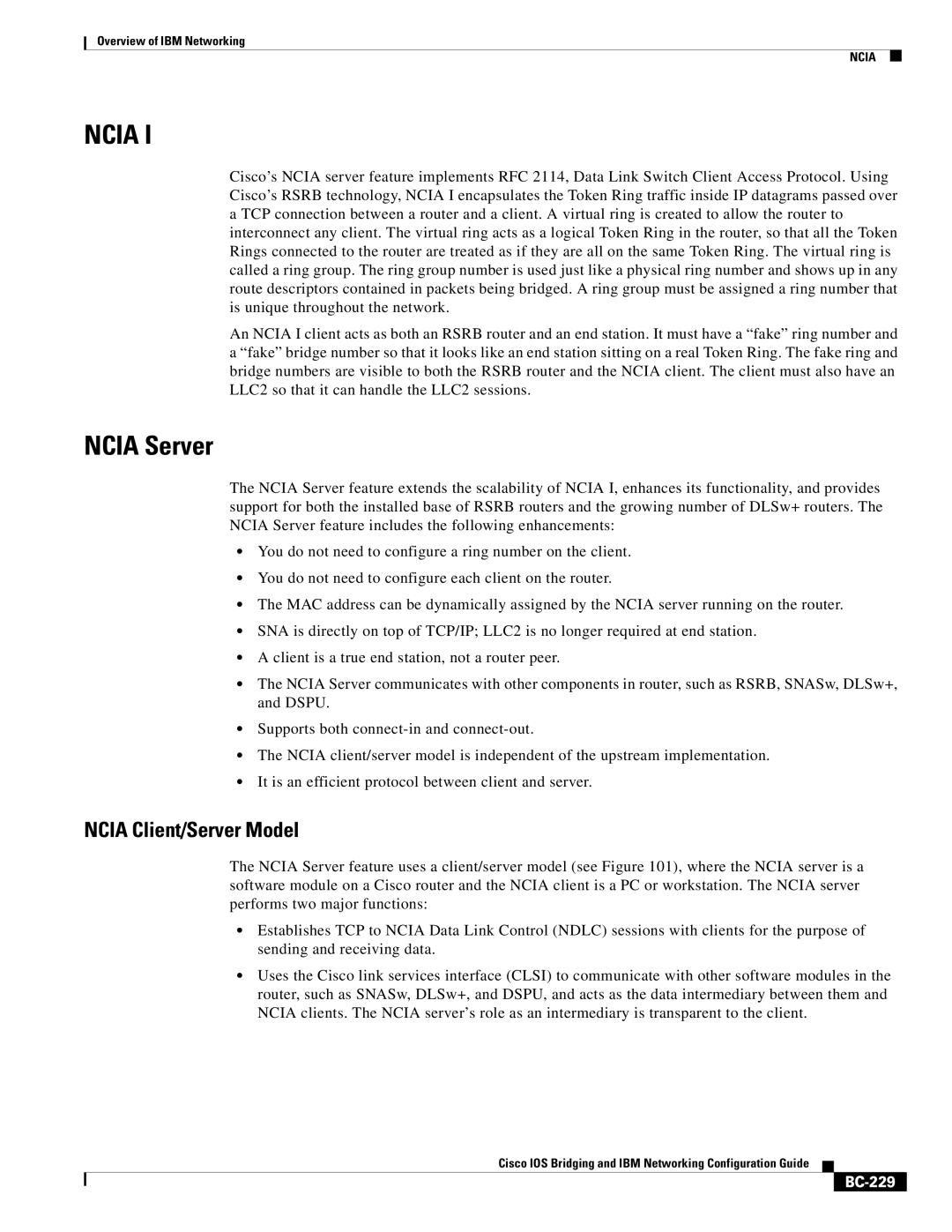
Overview of IBM Networking
NCIA
NCIA I
Cisco’s NCIA server feature implements RFC 2114, Data Link Switch Client Access Protocol. Using Cisco’s RSRB technology, NCIA I encapsulates the Token Ring traffic inside IP datagrams passed over a TCP connection between a router and a client. A virtual ring is created to allow the router to interconnect any client. The virtual ring acts as a logical Token Ring in the router, so that all the Token Rings connected to the router are treated as if they are all on the same Token Ring. The virtual ring is called a ring group. The ring group number is used just like a physical ring number and shows up in any route descriptors contained in packets being bridged. A ring group must be assigned a ring number that is unique throughout the network.
An NCIA I client acts as both an RSRB router and an end station. It must have a “fake” ring number and a “fake” bridge number so that it looks like an end station sitting on a real Token Ring. The fake ring and bridge numbers are visible to both the RSRB router and the NCIA client. The client must also have an LLC2 so that it can handle the LLC2 sessions.
NCIA Server
The NCIA Server feature extends the scalability of NCIA I, enhances its functionality, and provides support for both the installed base of RSRB routers and the growing number of DLSw+ routers. The NCIA Server feature includes the following enhancements:
•You do not need to configure a ring number on the client.
•You do not need to configure each client on the router.
•The MAC address can be dynamically assigned by the NCIA server running on the router.
•SNA is directly on top of TCP/IP; LLC2 is no longer required at end station.
•A client is a true end station, not a router peer.
•The NCIA Server communicates with other components in router, such as RSRB, SNASw, DLSw+, and DSPU.
•Supports both
•The NCIA client/server model is independent of the upstream implementation.
•It is an efficient protocol between client and server.
NCIA Client/Server Model
The NCIA Server feature uses a client/server model (see Figure 101), where the NCIA server is a software module on a Cisco router and the NCIA client is a PC or workstation. The NCIA server performs two major functions:
•Establishes TCP to NCIA Data Link Control (NDLC) sessions with clients for the purpose of sending and receiving data.
•Uses the Cisco link services interface (CLSI) to communicate with other software modules in the router, such as SNASw, DLSw+, and DSPU, and acts as the data intermediary between them and NCIA clients. The NCIA server’s role as an intermediary is transparent to the client.
Cisco IOS Bridging and IBM Networking Configuration Guide
